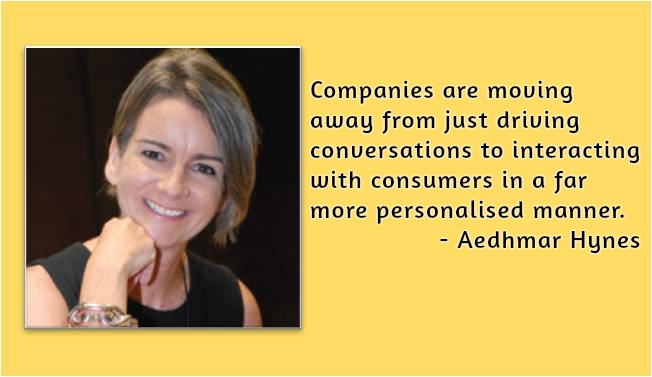RT: You once said that technology has become a core part of all businesses. What do you think is the future of this evolution?
AH: In today’s connected, digital world, technology is increasingly transforming the way we live, engage and interact. To engage with consumers and to create a technology powered lifestyle, brands are using innovative technology solutions including the Internet of Things (IoT), data analytics, AR (augmented reality) and VR (virtual reality). Companies are moving away from just driving conversations on social media to interacting with consumers in a far more personalised manner through augmented intelligence.
At Text100, we are moving towards becoming a marketing and communications firm. We know and understand technology and how it changes lives as we work with several technology leaders including Microsoft, IBM, Adobe, Lenovo, Cisco, Xerox and so on.
RT: Text100 has seen significant growth in client work across its Asia-Pacific offices in the last few months, with many new account wins. The company’s India practice has seen huge development too. Please comment.
AH: Yes, absolutely! It is great to have won close to 20 new clients in such a short period of time, pitching against PR, advertising, digital and social agencies. India and China, in particular, have seen huge growth in our core technology space as well as several other sectors such as healthcare, consumer electronics, automotive among others all of which are seeing significant disruption and digitisation.
RT: According to you, what is India’s role in the global PR landscape, in terms of market potential and business innovation?
AH: Over the last two decades we’ve seen the communications and PR landscape evolve both in India and globally. In India, we’ve seen the market move from being largely print-exposure led, to one where traditional and digital command equal attention and drive equal impact.
Compared to the pace of change internationally, India has been jumping technology revolutions. From the 90s to this day, we have witnessed television and radio booms and then the mobile and social media revolution. The communications arena has therefore seen rapid evolution in less than three decades – it is richer, wider and far more dynamic today than ever before. We see India materialising into a strong content and design hub over the next few years for the rest of the world.
RT: In the 21st Century, communication is the new currency of power. How do you think you can help corporates encash on this?
AH: There are immense opportunities for brands to experiment. Most marketers are now focusing on creating content that is more relevant to users and seamlessly available on any screen. For example, mobile experience is all about visual storytelling. Focusing on all aspects of content – be it creating, designing and/or marketing can help brands leave a better and lasting impact. Brands therefore, need to redefine how they are telling their stories. Also, marketing of relevant content to the right audience on the right platform is vital to secure consumer mindshare. Future focused brands need to be able to connect with the next generation of consumers in real time.
We will continue to evolve in this dynamic environment, so that we remain one step ahead of the pace of change.
RT: Where do you think the question of ethics features in this equation of communication currency?
AH: Ethical communications is critical and our clients are on the same page as us when it comes to this dimension. Today, we are seeing companies evolve beyond just ethical communications to become purpose-driven brands. Given the proliferation of digital platforms, this assumes even greater transparency and the importance of becoming not just a trusted brand but a brand that lives its values across all stakeholders inside and out.






Be the first to comment on "In Conversation – Aedhmar Hynes"